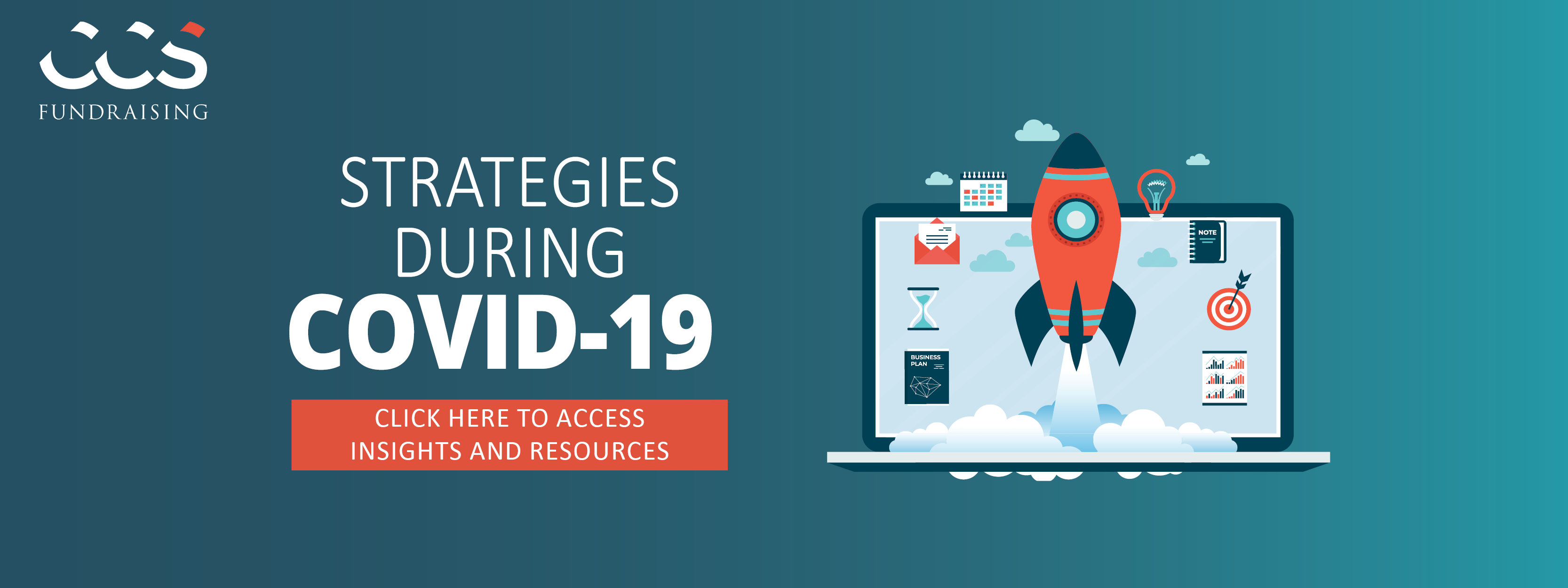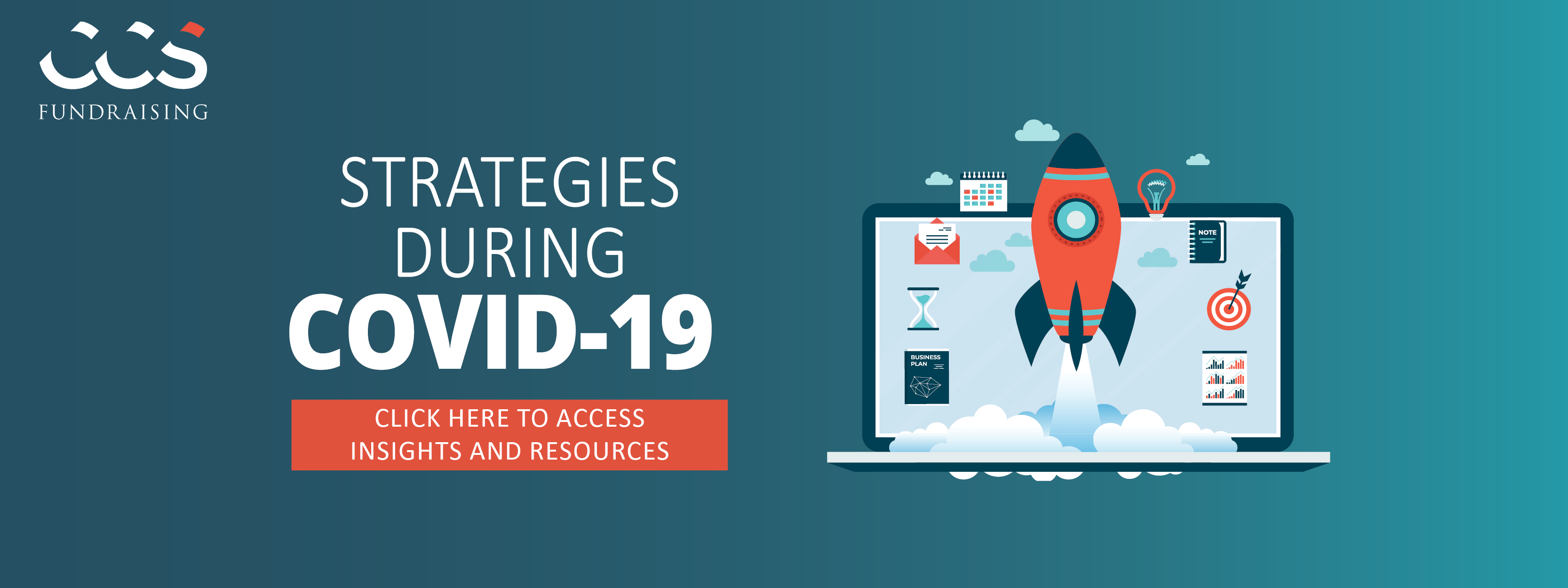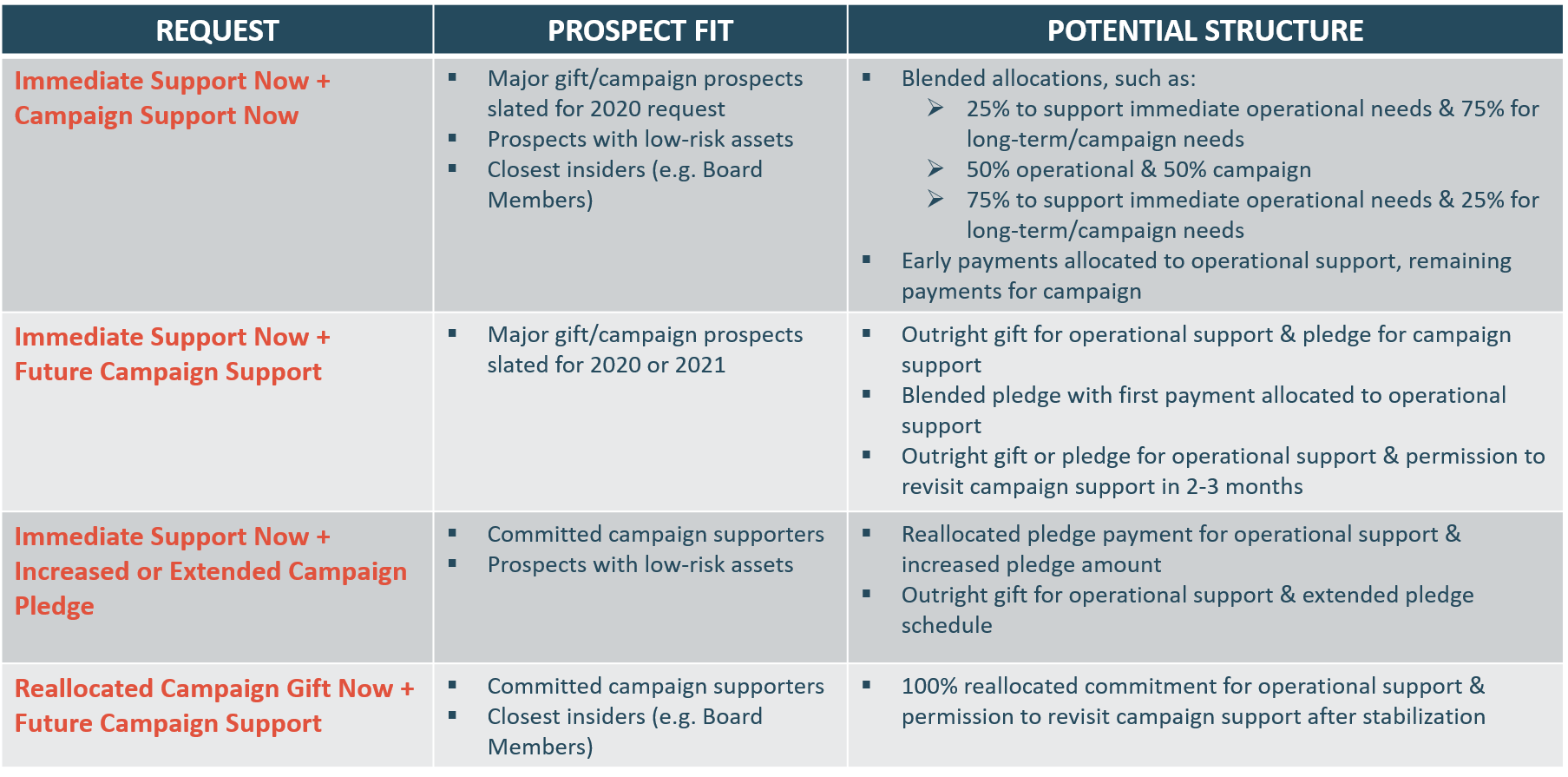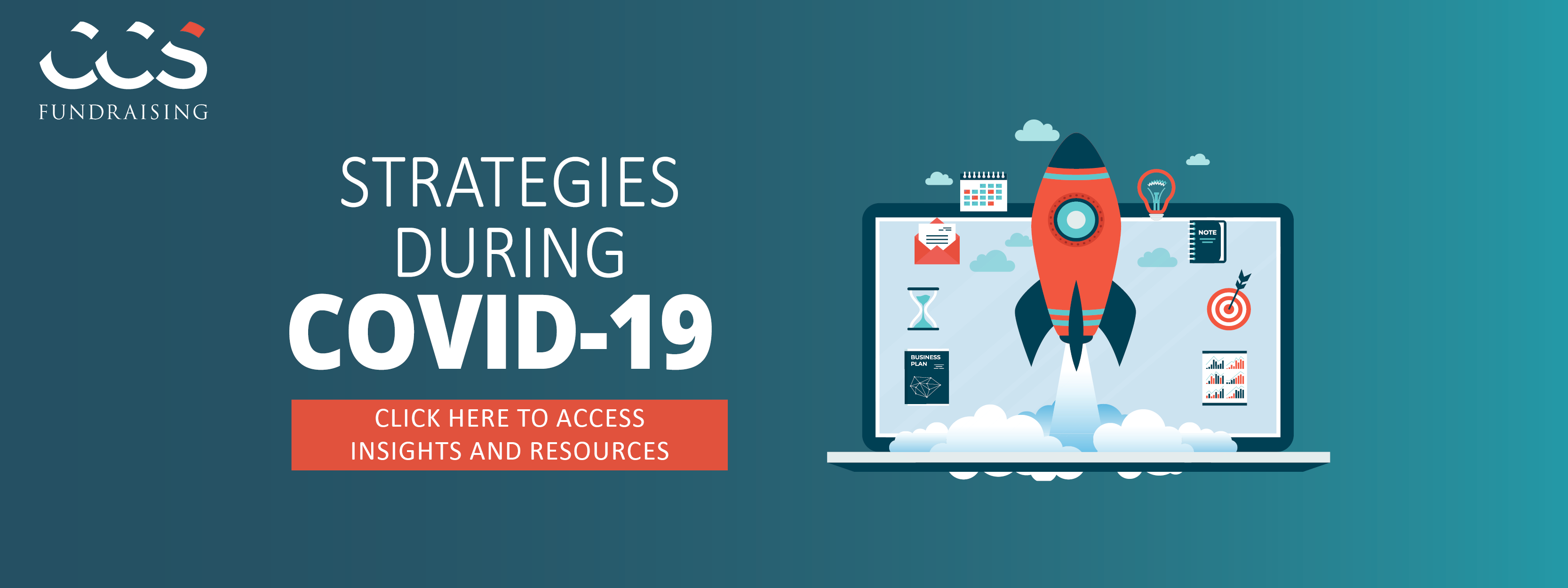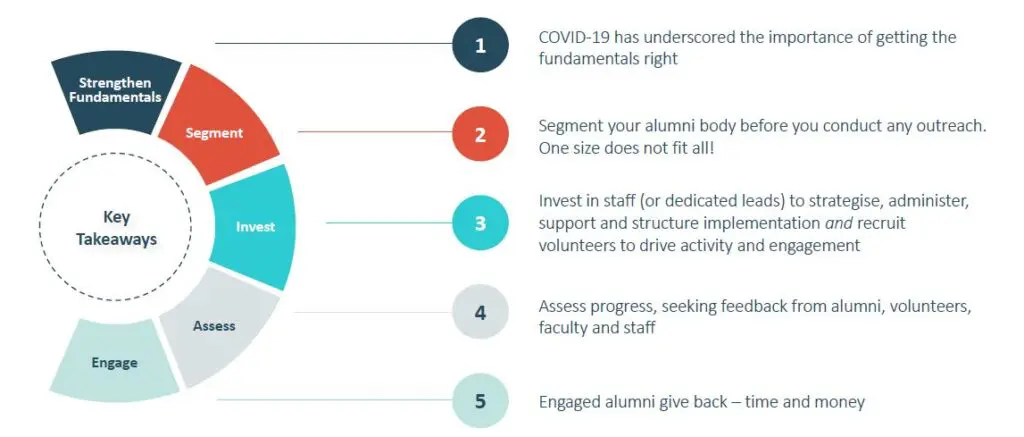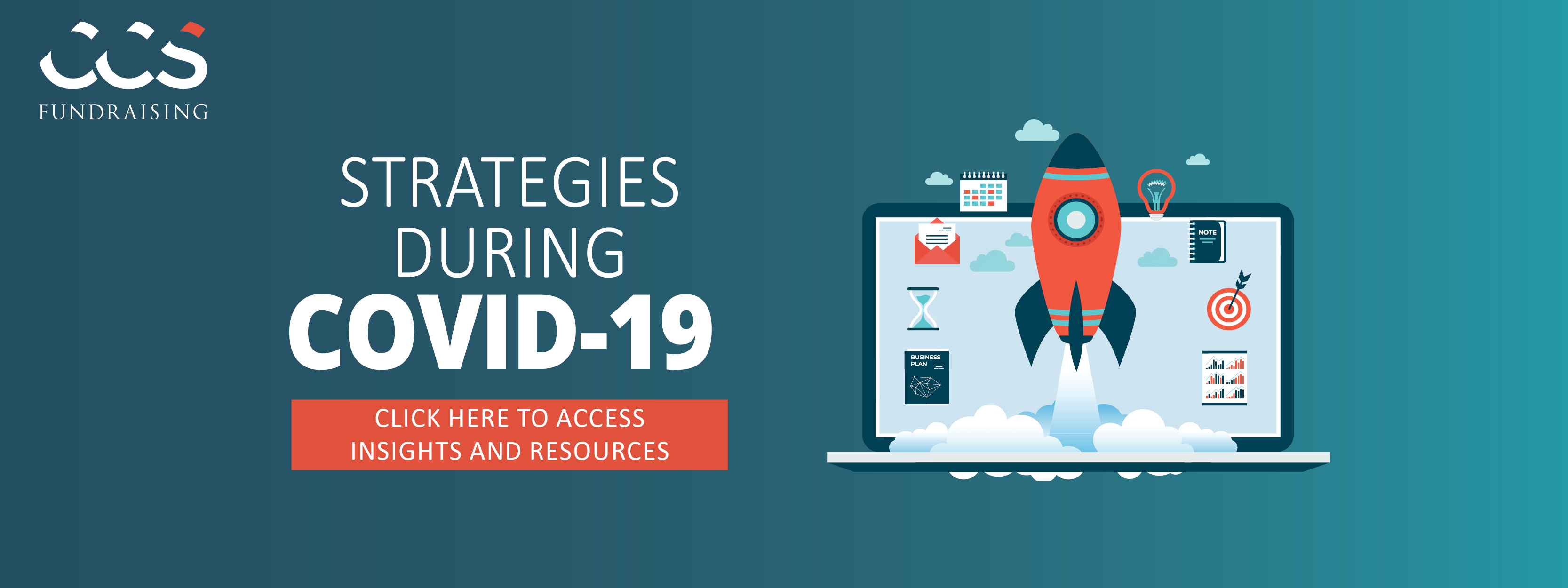In recent months, our global community has faced extraordinary circumstances that have forced long-standing institutional and systemic inequities to the forefront of our collective consciousness. The COVID-19 pandemic shined a spotlight on the disproportionate impact of health crises on our most vulnerable populations, and the Black Lives Matter movement galvanized global attention and action around systemic racism. These events may seem unrelated, but the root of both is simply injustice. While these issues are not new, the attention, momentum, and urgency to address these problems are. CCS Fundraising’s Inequity in a Global Crisis webinar series was originally conceived to discuss inequities amplified by COVID-19, but because of the intersectionality of this work, we hope our research will serve as a catalyst for critical thinking and innovative solutions to create a more just and equitable society.
The ramifications of the current global health pandemic and corresponding economic crisis are not universal. Due to inequities that existed long before the coronavirus, their disproportionate effects on certain populations have been heightened and compounded by the COVID-19 pandemic. Women; black, indigenous, and people of color (BIPOC); LGBTQ+ communities; people with disabilities; and those experiencing homelessness or economic insecurity are among populations facing challenges that far exceed others. Individuals who form these constituencies are experiencing a significantly greater degree of:
- Institutionalized economic insecurity and the concurrent lack of a financial safety net.
- High unemployment rates and high risk of exposure through “essential” jobs.
- Limited access to routine healthcare and historically higher incidences of underlying health conditions.
- Discrimination by implicit or explicit bias, isolation and a vulnerability to hostile or violent behavior.
- Limited access to necessary and life-sustaining services.
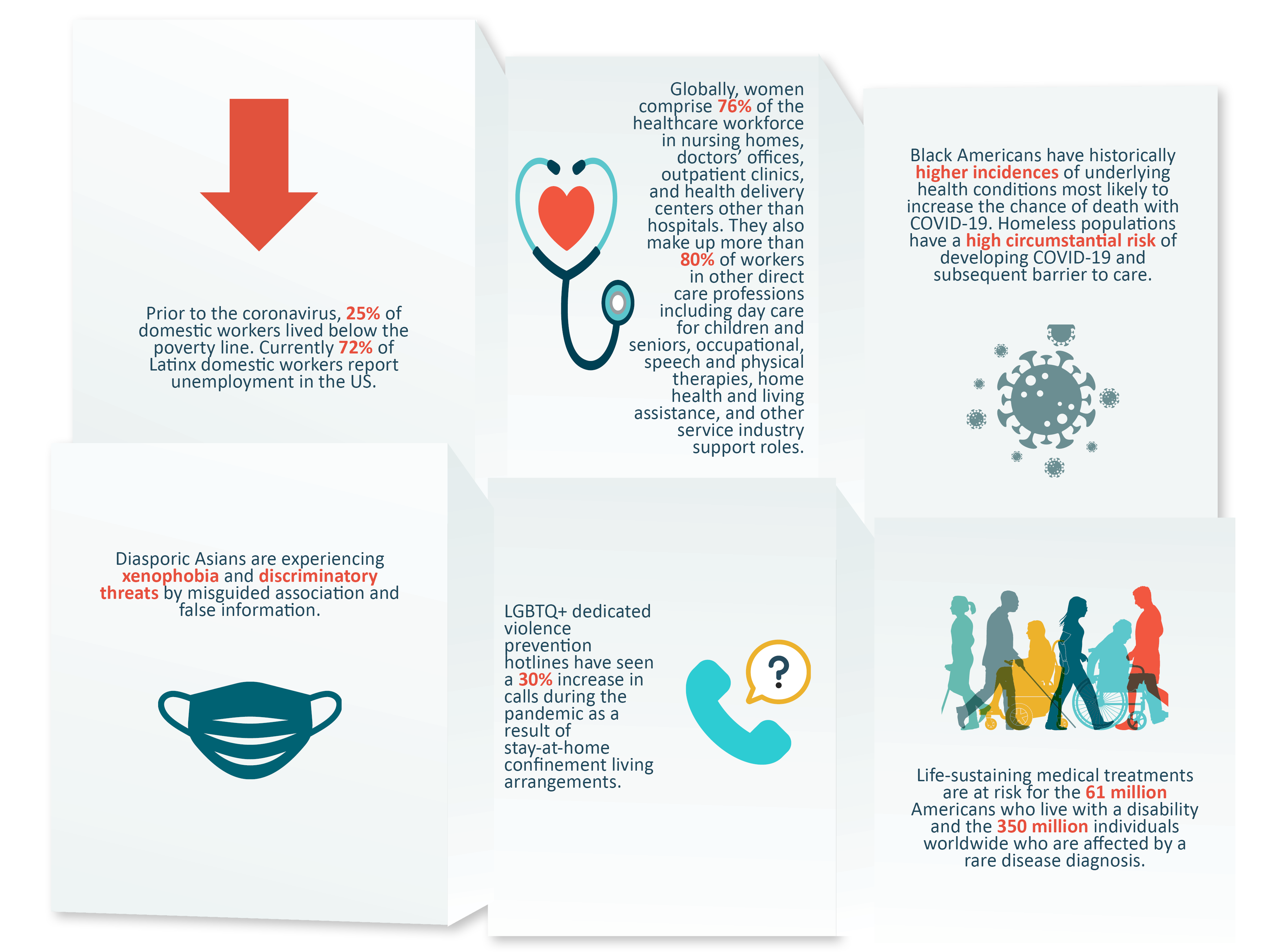
While the risk of contracting COVID-19 is universally threatening, the lasting impact of inequity will burden these communities long after the pandemic has ended.
Many of these effects can be minimized with robust support from the broader philanthropic community. However, doing so successfully will require more than a “one-size-fits-all” fundraising effort to alleviate the unique suffering experienced by these underserved populations. Fundraising to alleviate the long-term effects of the pandemic and concurrent economic crisis requires empathy, agility, innovation, and a dynamic perspective in order to meet the diversity of needs these communities face.
This effort begins with a commitment to reduce stigma and build community resilience by:
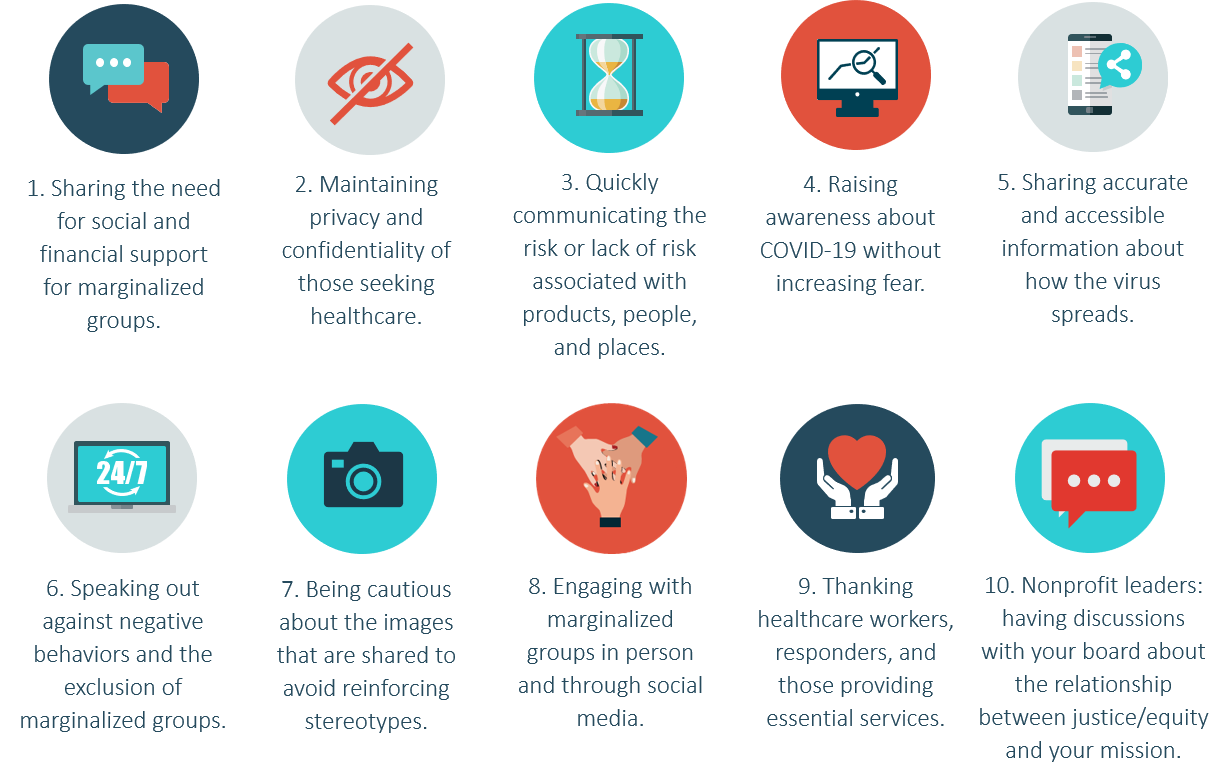
The question then becomes: how do we contextualize this information when building a responsive funding strategy? Philanthropists and nonprofit organizations can transform the future and help rebuild the fabric of society by viewing their mission through a lens that acknowledges these inequities. This will help align their existing work with the needs that have been brought into global focus.
Consider:
- Acknowledging the complex challenges that emerge from the intersection of this virus and the inequities that have long existed in our society.
- Demonstrating a direct link between the challenges faced by these constituencies and your mission, vision, and goals, advocating for these constituencies, and strengthening your organization’s connection.
- Seeking proportionate and adaptable solutions for the underlying causality to competently address systemic inequities.
- Planning in a strategic, thoughtful, and measured way and setting inspirational goals and clear benchmarks for success in all aspects of your mission.
- Supporting local organizations who serve, and businesses owned by, these populations
- Partnering with and centering the voices, experiences, and perspectives of the populations you serve.
Although increased access to resources is the common theme, we should examine the structures in place that have created these inequities. Philanthropists and nonprofit organizations can begin to address these issues in some of the following ways:
- Cisgender Women – Seek opportunities to collaborate and build partnerships with women who are already serving in various community leadership roles and strengthen these relationships with empathy and engagement.
- BIPOC – Ensure the stability of businesses owned by people of color by investing assets, funding equitable growth, and empowering equitable skills training.
- LGBTQ+ – Alleviate historical stigma and discrimination by facilitating education, conversation, and the spread of accurate information tailored to specific identities.
- People with Disabilities – Enhance the lives of the disabled by addressing the shortage of life-saving medical equipment and services.
- Homeless & Economically Insecure – Help fill the gap between need and government funding for the critical shortage of housing and wrap-around services.
For more information on these topics and fundraising strategies to address inequities amplified by the current pandemic, we hope you will view our webinar presented on June 3, 2020. We also encourage you to access these Inequality in a Global Crisis documents that provide resources and references for each of these constituencies.
